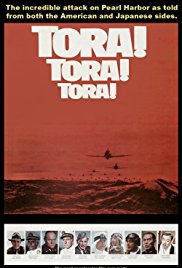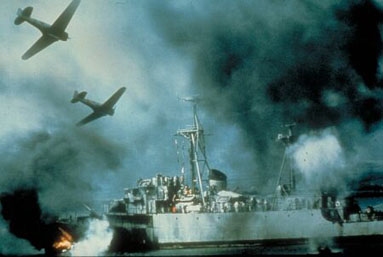The history of the Western powers in Asia is not a pretty one. Many countries were forced to become colonies of Imperialist powers. Westerners had forced China to grant them trading concessions. England addicted millions of Chinese to opium (a drug which the British controlled) in order to pay for the tea which the British people bought in huge quantities. The United States participated in seeking trading concessions to a small degree and held the Philippines as a colony, having won it from Spain in the Spanish-American war. Japan claimed that its aggression in Asia was for the purpose of kicking out the Western powers. In reality, the Japanese sought to replace the Western powers as an imperialist presence in Asia.
In 1937, after having conquered Manchuria, Japan invaded China. By December 1941, public opinion in the U.S. had turned against Japan because of Japan’s alliance with Germany, the atrocities committed by Japanese troops against Chinese civilians, and the threat posed by Japanese expansionism to U.S. interests. There was, however, no overwhelming desire among the American people to go to war with Japan.
As of December of 1941, the only important step taken by the United States against Japan was the denial of export licenses for oil. However, Japan saw the U.S. as the only obstacle to its plan to dominate Asia. Because the other Western powers were preoccupied with the war in Europe and because President Roosevelt kept the bulk of the U.S. Fleet in the Pacific, Japan saw an opportunity to neutralize the U.S.
The December 7, 1941 surprise attack on Pearl Harbor was a major victory for the Japanese Navy. In less than two hours it destroyed 188 planes, damaged another 159 planes, and sank or seriously damaged 18 warships. The battleships Arizona and Oklahoma were sunk. The California, the West Virginia and the Tennessee (also battleships) were badly damaged and would not rejoin the U.S. Fleet for months. 2,403 American military personnel were killed and 1,178 wounded. The Japanese lost only 29 planes and pilots, five midget submarines, and one large sub.
In the Battle of Midway, just short of six months after the attack on Pearl Harbor, the U.S. Navy wreaked its vengeance. U.S. intelligence had broken the code used by the Japanese Imperial Navy. Using information gleaned from intercepted Japanese radio transmissions, the U.S. Navy surprised a major Japanese assault on Midway Island. In the ensuing battle, four Japanese aircraft carriers and a heavy cruiser were sunk, 322 planes were destroyed, and 3,500 Japanese military personnel were killed, including 100 first line pilots. The U.S. Navy lost a carrier, a destroyer, 150 planes, and 307 lives. The Japanese Navy never recovered from this blow. See Learning Guide to “Midway“.
Admiral Yamamoto was killed in April of 1943 when the U.S., using decoded Japanese messages, ambushed his plane over the Solomon Islands.
This movie was a joint U.S./Japanese production released in 1970. It was made in the context of the Cold War in which Japan was one of the United States’ primary allies in the Pacific. The film is focused narrowly on the attack on Pearl Harbor and implicitly recognizes the goals of the Japanese military as being legitimate. But looking at the record of Japanese expansionism and the atrocities of its military, this is absurd. Japan was wrong to invade Manchuria, wrong to invade China, wrong to invade Indochina, and wrong to attack Pearl Harbor. This movie shows how the needs of a particular time can warp the perspective shown in a movie.



